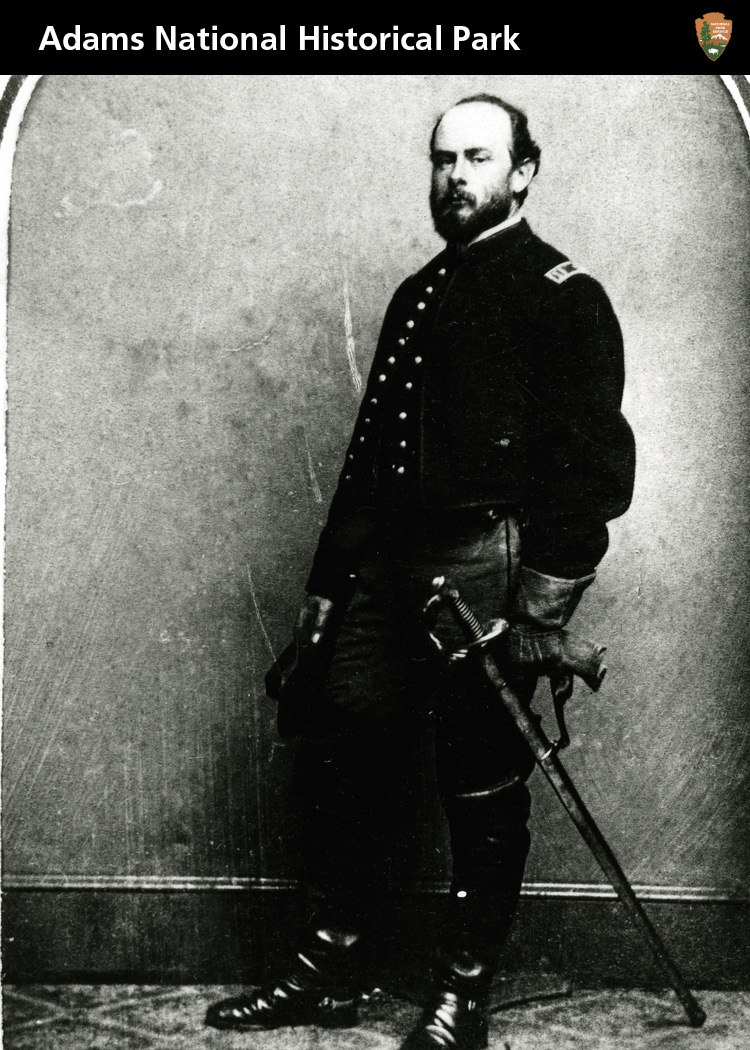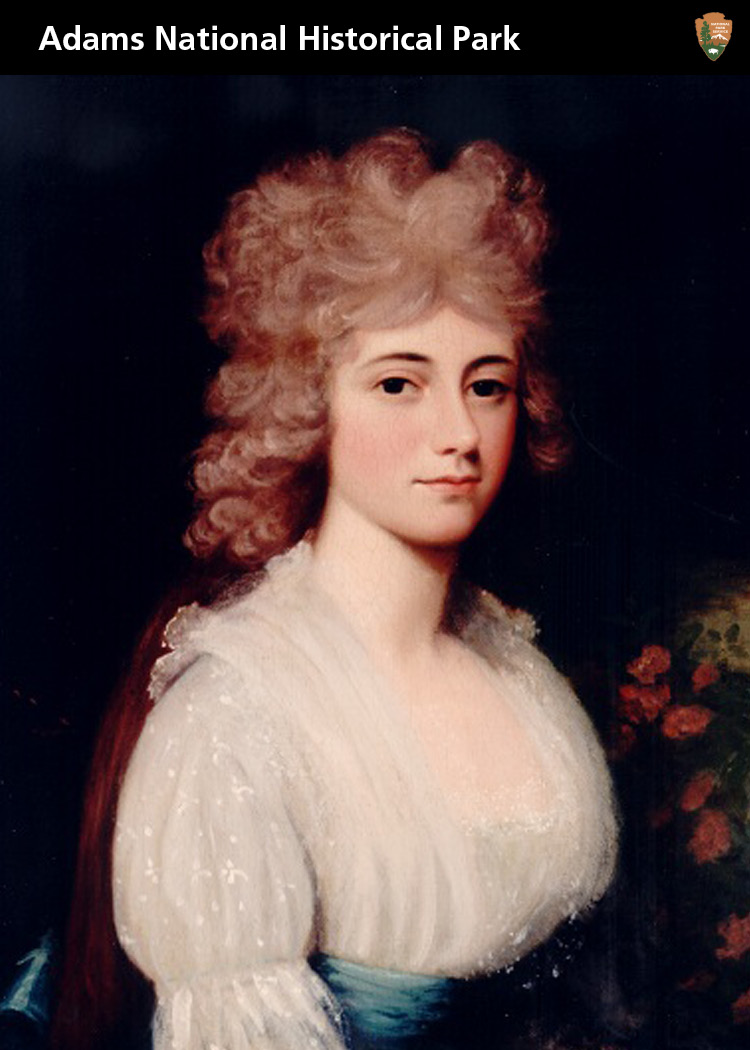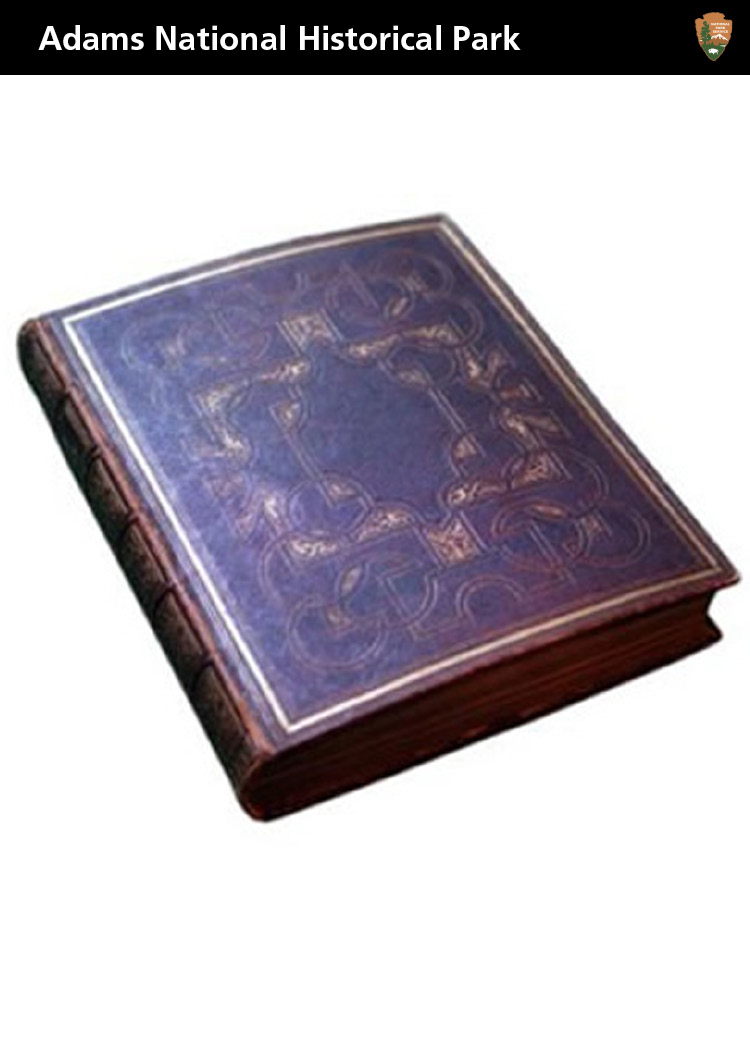|
Adams National Historical Park Massachusetts |
 |
 NPS photo | |
The Great American Political Experiment
From the American Revolution to the Civil War, and from the industrial age to modern times, four generations of the Adams family confronted some of this nation's greatest challenge in war and politics. They also achieved enormous successes in diplomacy, history, and art and letters. The family history unfolds uncannily parallel to the nation's rapid transformation from 13 disparate British colonies into a United States and a world power.
"I must study politics and war, that my sons may have liberty to study mathematics and philosophy," wrote Revolution-era leader and second President John Adams. His prophetic words foretold both the Adams family public personas and America's rapid growth. Indeed, his sons would study diplomacy, navigation, and commerce, and their sons studied history, art, and literature. "... America made the Adamses possible ... and the Adamses expressed America," historian Daniel J. Boorstin observed. Adams National Historical Park commemorates these men and women who dedicated their lives to developing and serving their nation. The park is the birthplace homes of Presidents John and John Quincy Adams. It is also the Old House at Peace field, home to the four illustrious Adams generations, from 1788 to 1927. It is as well the Stone Library whose 12,000 volumes—the breadth and depth of American and European thought—embodied the family's intellectual prowess and the nation's intellectual promise.
These legendary accomplishments might suggest that American power and progress were foregone conclusions. But rebellion and nation building, industrialization and developing a distinctive national culture were anything but foregone conclusions for a fledgling nation. They were the staggering accomplishments that these historic landscapes, structures, and library and museum collections commemorate.
The Adams family's devotion to the public interest runs like a scarlet thread throughout the tapestry of American history.
—President john F. Kennedy
The birthplaces of John Adams and John Quincy Adams are the nation's oldest presidential birthplaces. They stand on their original foundations at the foot of Penn's Hill, 75 feet apart.
John Adams, the nation's second president, grew up in this rural setting—seven miles south of Boston and less than a mile from the sea—where his father Deacon John Adams farmed in summer and made shoes in winter.
After graduating from Harvard College and being admitted to the Massachusetts Bar, John Adams married Abigail Smith on October 25, 1764. The young couple moved into the farmhouse next to Deacon John's. In this humble setting, the young lawyer cultivated his career in politics and law and drafted the Massachusetts Constitution. This "little cottage" was the birthplace of their oldest son and sixth president of the United States John Quincy Adams.
In this simple saltbox Abigail Adams, loving confidant and prolific correspondent to her often absent husband, assumed the role of "patriot on the homefront." Abigail melted her pewter spoons to make musket balls for the Continental Army. The couple's oldest son John Quincy Adams was truly a child of the American Revolution.
It is but the farm of a patriot.
—John Adams
From Working Farm to Country Estate to National Historical Park
Returning to a grateful nation in 1788 after years abroad as a diplomat and minister plenipotentiary, John Adams with his wife Abigail moved into a "very Genteel Dwelling House" on 75 acres just over a mile from their humble farmhouse. "I think to christen my Place by the Name of Peace field," John Adams wrote, "in commemoration of the Peace which I assisted in making in 1783 ..." He continued to serve his country as the first vice president and second president of the United States. He and Abigail spent their retirement years living here year-round. Their descendents would only summer at what they affectionately called the "Old House," today's "Old House" at "Peace field." In time "Peace field" was changed from a working farm to a country estate as farming gave way to horticulture. John Quincy Adams found great satisfaction and comfort in planting trees and lived by the motto "he plants for future generations." His son Charles Francis Adams transformed his grandmother's kitchen garden into a formal flower garden bounded by the ancient boxwood hedge. By 1927 Brooks Adams, the last family member to live in the house, had set the stage for the Adams Memorial Society, made up of the direct descendents of John and Abigail Adams, to manage the property. In 1946 the National Park Service accepted the Adams family estate from the Society, to continue the family mandate to inspire "civic virtue and patriotism." "Peace field" resonates with the meanings that four Adams family generations invested in this place. Posterity you will never know how much it has cost my generation to preserve your freedom, wrote John Quincy Adams. I hope you will make good use of it. A visit to Adams National Historical Park—to the Presidential Birthplaces, "Old House" at "Peace field," Stone Library, Carriage House, and the outstanding museum collections—enables you to walk in the footsteps of one of the America's great founding families.
"I think to christen my Place by the Name of Peace field."
—John Adams
Planning Your Day
 (click for larger map) |
The park is open seven days a week, April 19 through November 10. An admission fee is charged for visitors 17 and older. All tours begin at the visitor center in The Galleria at President's Place, 1250 Hancock Street. The visitor center is open 9 am to 5 pm, April 19 through November 10. From November 11 through April 18 the historic homes are closed, and the visitor center is open Tuesday through Friday, 10 am to 4 pm. Advance reservations are required for groups of eight or more.
Two-hour guided tours of the birthplaces and the Old House at Peace field leave the visitor center every 30 minutes from 9:15 am until 3:15 pm, first-come, first-served, from April 19 through November 10.
The United First Parish Church, final resting place of both presidents and first ladies, is next to the visitor center. If you choose to visit the church please allow 30 more minutes. An admission fee is charged. Across the street is the historic Hancock Cemetery, which is available for self-guiding tours.
Get Oriented Exhibits, a bookstore, orientation to the site, and public restrooms are available at the visitor center. Validated parking is offered in the Presidents Place Parking Garage, reached via Saville Avenue. For validation you must bring your ticket in to the visitor center. For lodging information visit www.nps.gov/adam and click on "Plan Your Visit."
For directions by car see the park website.
By rail take the Red Line Subway (Braintree Line) to the Quincy Center Station. At the top of the stairs turn left and leave by the Hancock Street exit. The visitor center is across Hancock Street in The Galleria at Presidents Place.
Passes The park accepts America the Beautiful-National Parks and Federal Recreational Lands Passes and the Adams National Historical Park Pass. Buy National Park Passes at the visitor center. They admit the cardholder and three other persons to the park.
Pets No pets are allowed anywhere in the park (except for service animals).
Accessibility The visitor center and trolley bus are wheelchair-accessible. Stairs and uneven surfaces limit access to the ground floors of the historic homes.
Junior Ranger Do you have what it takes to help America to preserve and understand the importance of its national treasures? Pick up your Junior Ranger activity booklet at the visitor center. Complete it during your tour and bring it back to the visitor center to receive your badge and certificate commissioning you as a Junior Park Ranger.
How You Can Help The park collections include over 75,000
artifacts belonging to four generations of the Adams family. To protect them,
the following are prohibited in the homes:
• Video or photography.
• Backpacks, large bags, carriages, or strollers.
• Touching furniture, wall coverings, or any artifacts.
• Food, drink, smoking, and pets (except for service animals).
Donations Donations are accepted at the visitor center and other locations.
I want a garden and a park, My Dwelling to surround.
—John Quincy Adams
Source: NPS Brochure (2012)
Brochures ◆ Site Bulletins ◆ Trading Cards

Documents
Archeological Collections Management at Adams National Historic Site, Massachusetts ACMP Series No. 9 (Darcie A. MacMahon, 1991)
Cultural Landscape Report: Adams National Historic Site Olmsted Center for Landscape Preservation Cultural Landscape Publication No. 13 (Katharine Lacy, 1997)
Cultural Landscape Report for Adams Birthplaces, Adams National Historical Park, Quincy, Massachusetts: Site History, Existing Conditions, Analysis and Evaluation, Treatment Olmsted Center for Landscape Preservation (Kirsten Holder, James Bertolini and Jaime R. Young, 2014)
Foundation Document Overview, Adams National Historical Park, Massachusetts (May 2019)
Junior Ranger Program (Ages 6-8), Adams National Historical Park (Date Unknown; for reference purposes only)
Junior Ranger Program (Ages 9 and up), Adams National Historical Park (Date Unknown; for reference purposes only)
National Register of Historic Places Nomination Forms
Adams National Historic Site (Anne Booth, June 16, 1977)
John Adams Birthplace (Polly M. Rettig and Charles E. Shedd, Jr., February 19, 1960, March 5, 1975)
John Quincy Adams Birthplace (Polly M. Rettig and Charles E. Shedd, Jr., February 19, 1960, c1975)
United First Parish Church, Unitarian (Stone Temple) (Charles W. Snell, June 11, 1970)
Proposed: Adams Mansion National Historic Site (1945-1949)
The Birthplaces of Presidents John Adams and John Quincy Adams. Volume I. Historic Furnishing Report (Laurel A. Racine, April 2001)
"Things Kept and Cherished": A History of Adams National Historical Park — Administrative History (Laura A. Miller, October 2020)
United First Parish Church (Unitarian), Church of the Presidents, Historic Structure Report (Peggy A. Albee, Richard C. Crisson, Judith M. Jacob and Katharine Lacy, April 1996)
Books

adam/index.htm
Last Updated: 12-Oct-2024


























